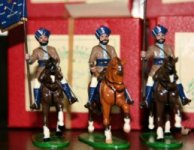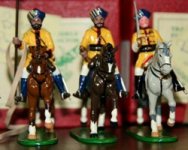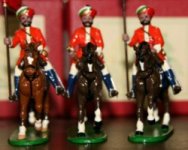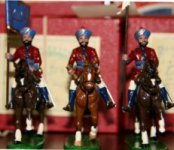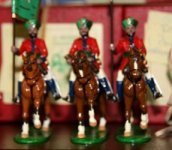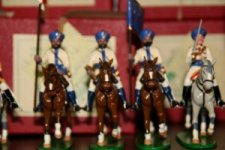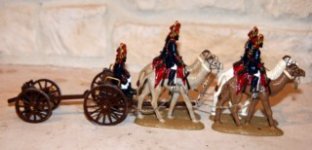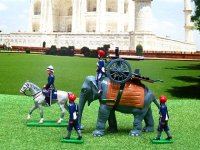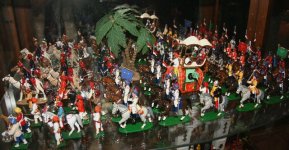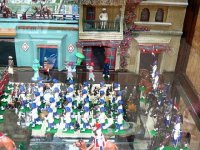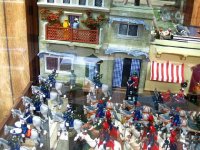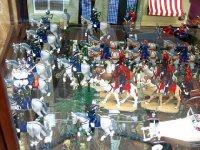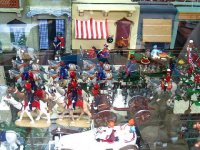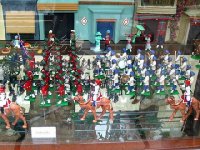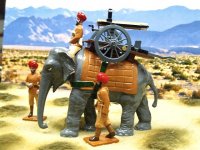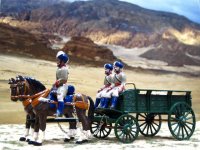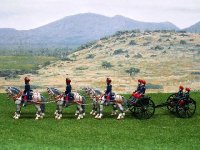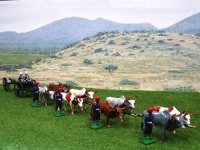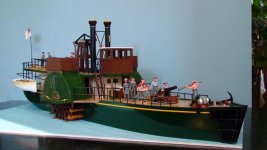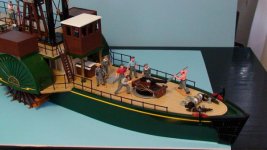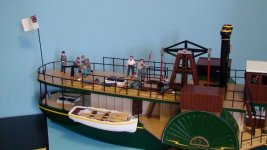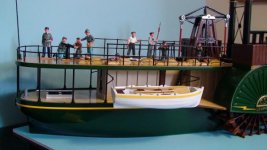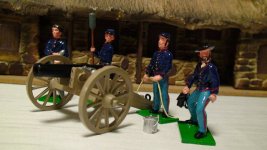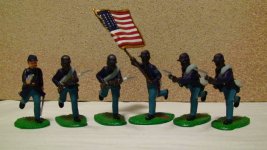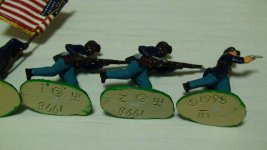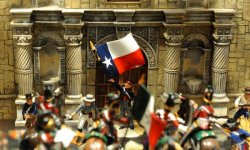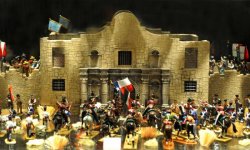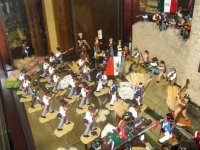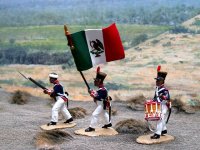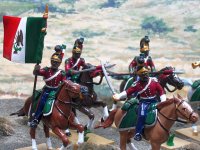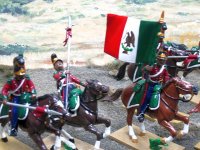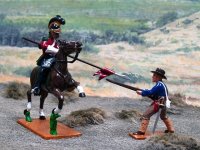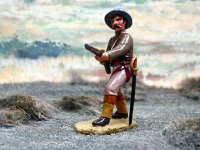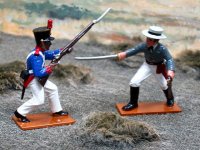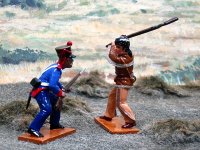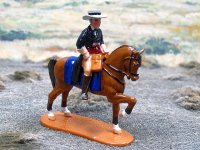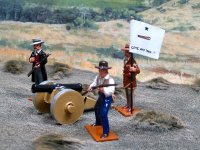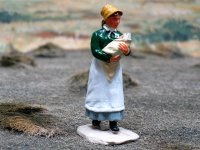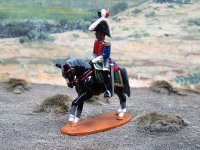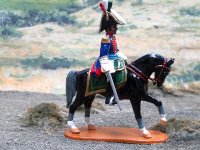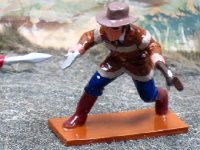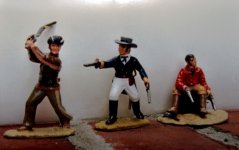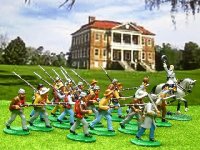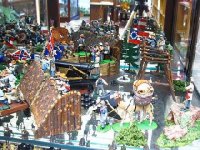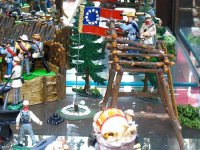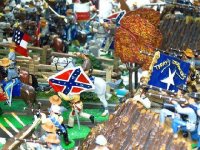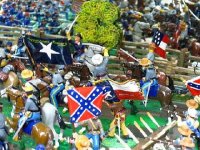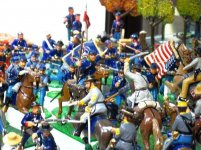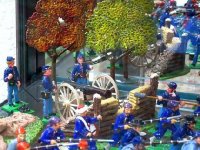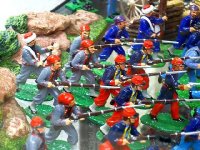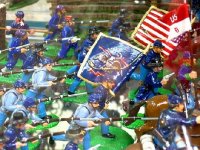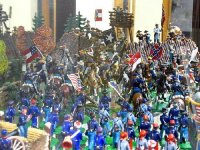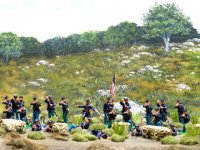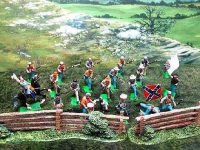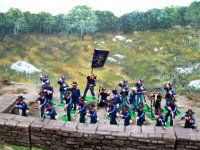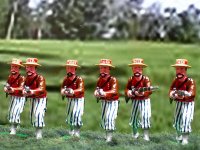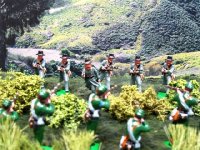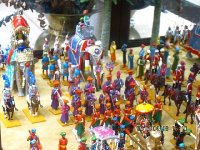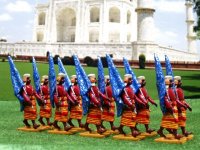Wives like that are keepers. Mine is totally understanding too. Every flat surface in our apartment is covered with King & Country vehicles, warbirds, dioramas and figures, and she hasn't killed me or thrown me out (yet!).
As far as number of K&C sets which I have, its easier to count what I need than what I have. Suffice it to say I have 46 of the original wood metal and resin vehicles (all but one ever produced, the resin hanomag - I have 4 of the wood ones, but have never been able to find the resin one), all of the Polystone vehicles (including 2 one of kinds I got directly from Andy), every WWII figure (except for the two early glossy sets of free french from 1993), 8 dioramas produced by K&C, every one of the production wood and papier mache buildings (except for the Hong Kong village gate) and 39 of the wood aircraft (38 warbirds plus a Huey Helicoptor). If I pulled it all out of storage I couldn't fit it in my apartment. I usually have about 5% on display, but about 10% of it was pulled out for the New York symposium. One of these days, when I have a house, I hope to be able to display all of it.
Production Runs, now there is a question that would take some time to answer. In the beginning (1984) Andy used to authorize 500 of each ofhis sets, and they came with a card indicating which number of 500 each set was. However, very rarely were the full 500 sets produced. In 1991, he produced a gulf war commemerative set of U.S. marines which was limited to 200 sets. Arnhem was again limited to 500 sets, but there was a second release with another 500 of each of the first sets produced. The early wood warplanes were sometimes extremely limited production, with many of the less popular planes limited to 5, 3, 2 or even 1 produced. Some of the more popular planes, like the Spitfire (perhaps 100 made), the ME109 (100) the Hurricane (50) enjoyed larger production runs. The first wood tanks (Tiger, Panther & Sherman) made in China were limited to 50 each. There were second and third (more detailed and nicer) productions of the Tiger (made in the Philopines) with about another 100 made total. The Sherman also had a second run of about 50 more detailed tanks. Many of the less popular wood vehicles had even more limited runs of 20-30 vehicles. The resin vehicles were usually limited to no more than 12, but there were more resin Kubelwagons made (maybe as many as 50-100). The first polystone vehicles were done in runs of 200, with an additional 100 winter sets made. Some of the winter production runs were even smaller, such as the winter Sherman (10-20) and the winter T34 (only made at the request of and sold by Tony Ciccarillo of the Toy Soldier Gallery in Highland Falls New York) (20). More recent polystone vehicles and figures have no set number for production, but may see 1000 or even 1500 sets made, depending on demand, prior to retirement. There are plans for a limited edition of Napoleonic cavalry soon with 300 sets of each made. The foregoing information is based on Andy's talk about the history of K&C and questions and answer sessions at the New York Symposium (based on memory, so may be a little off here and there), but this should give you a basic feel for K&C production over the years.


